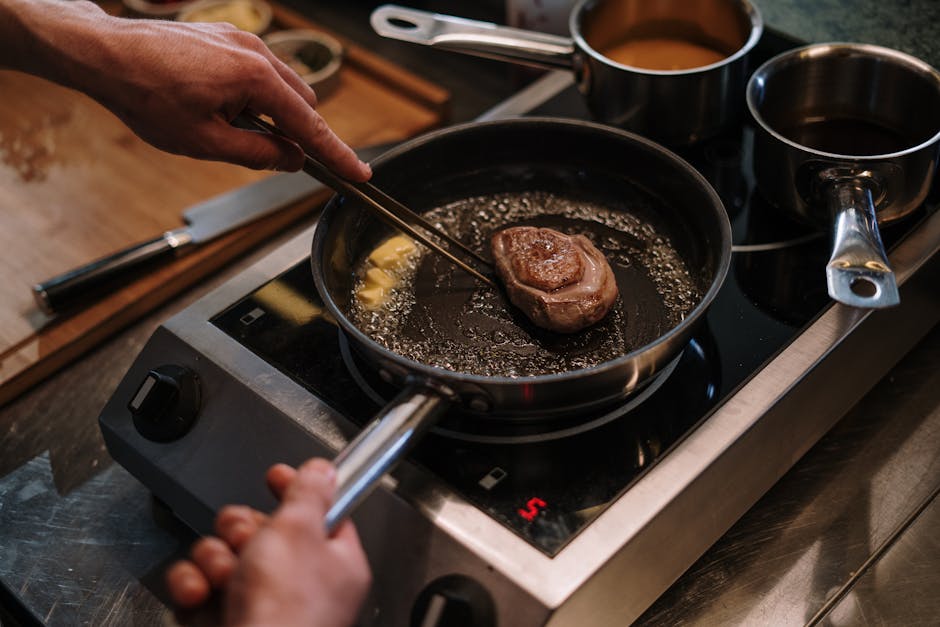Chef Secrets for Mastering the Perfect Steak at Home
There’s something undeniably satisfying about cooking the perfect steak at home. The sizzle of the meat hitting a hot pan, the aroma that fills the kitchen, and the anticipation of that first juicy bite all contribute to the allure of preparing a steak dinner. But achieving steak perfection requires more than just throwing a piece of meat on a grill. There are chef secrets and techniques that can elevate your steak game to restaurant-quality levels right in your own kitchen. In this article, we’ll delve into the world of steak cooking and uncover the secrets that chefs use to create the perfect steak every time.
The Science Behind a Perfect Steak

Before we dive into the specific techniques used by chefs to master the perfect steak, let’s take a moment to understand the science behind cooking steak. The Maillard reaction, which occurs when proteins and sugars in the meat are exposed to high heat, is responsible for creating the delicious crust on a steak. The internal temperature of the steak also plays a crucial role in determining the level of doneness, from rare to well-done. Understanding these fundamental principles will help you appreciate the techniques that chefs employ to achieve steak perfection.
Choosing the Right Cut

One of the first steps in mastering the perfect steak at home is selecting the right cut of meat. Different cuts have varying levels of tenderness, marbling, and flavor, which can affect the final outcome of your dish. Chefs often recommend cuts like ribeye, filet mignon, or New York strip for their balance of tenderness and flavor. Understanding the characteristics of each cut will help you choose the best option for your desired steak experience.
Preparation Techniques

Before cooking your steak, it’s essential to prepare the meat properly. Chefs often use techniques like dry brining or marinating to enhance the flavor and tenderness of the steak. Dry brining involves coating the steak with salt and letting it rest in the refrigerator for an extended period, allowing the salt to penetrate the meat and season it from within. Marinating, on the other hand, involves soaking the steak in a flavorful liquid to infuse it with additional taste. These preparation techniques can make a significant difference in the final outcome of your steak.
Temperature Control

Controlling the temperature while cooking your steak is crucial to achieving the perfect level of doneness. Chefs often use a meat thermometer to monitor the internal temperature of the steak and ensure that it reaches the desired level of doneness. Whether you prefer rare, medium-rare, medium, or well-done, maintaining precise temperature control is key to a perfectly cooked steak.
Resting Period
Once your steak is cooked to perfection, it’s essential to let it rest before serving. Allowing the steak to rest for a few minutes before slicing it allows the juices to redistribute throughout the meat, resulting in a more flavorful and tender steak. Chefs often recommend resting the steak for at least five minutes to achieve the best possible outcome.
Seasoning Secrets
Seasoning your steak is an essential step in creating a flavorful dish. Chefs often use a combination of salt, pepper, and other spices to enhance the natural flavors of the meat. Rubbing the steak with a spice blend or herb-infused butter can add depth and complexity to the dish. Experimenting with different seasoning combinations can help you discover new flavor profiles and elevate your steak game.
Searing vs. Grilling
There are two primary methods for cooking steak: searing and grilling. Searing involves cooking the steak at high heat in a pan to create a flavorful crust, while grilling involves cooking the steak over an open flame to impart a smoky flavor. Chefs often use a combination of both methods to achieve the perfect balance of crust and flavor. Understanding the differences between searing and grilling can help you choose the best cooking method for your steak.
Common Misconceptions About Cooking Steak
There are several common misconceptions about cooking steak that can lead to less than perfect results. One of the most prevalent myths is that you should only flip your steak once while cooking. In reality, flipping your steak multiple times can help it cook more evenly and develop a more flavorful crust. Another common misconception is that you should cook your steak straight from the refrigerator. Allowing your steak to come to room temperature before cooking can help it cook more evenly and result in a juicier end product.
FAQs About Cooking Steak
Q: How do I know when my steak is done?
A: The best way to determine the doneness of your steak is by using a meat thermometer. Different levels of doneness correspond to specific internal temperatures, so using a thermometer can help you achieve the perfect result every time.
Q: Should I use a gas or charcoal grill to cook my steak?
A: Both gas and charcoal grills can produce delicious steaks, so the choice ultimately comes down to personal preference. Gas grills offer convenience and temperature control, while charcoal grills impart a smoky flavor to the meat.
Conclusion
To wrap things up, mastering the perfect steak at home requires a combination of techniques, knowledge, and practice. By understanding the science behind cooking steak, choosing the right cut, preparing the meat properly, controlling the temperature, resting the steak, and experimenting with seasoning, you can elevate your steak game to restaurant-quality levels. Remember that cooking the perfect steak is as much an art as it is a science, so don’t be afraid to experiment and find what works best for you. With these chef secrets in your arsenal, you’ll be well on your way to creating mouthwatering steaks that will impress even the most discerning diners.




